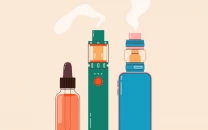Nawaz added whopping $35b to Pakistan’s debt
New loans were taken out to repay country’s maturing debt, maintain foreign currency reserves

Nawaz Sharif. PHOTO: REUTERS
About $17 billion or nearly half of the total loans obtained from July 2013 to June 2017 were utilised to repay the previous debt, shows statistics maintained by the finance ministry. The government added net $18 billion to the country’s total external debt and liabilities – the highest amount added by any government during its tenure.
From July 2013 to June 2017, Pakistan’s total external debt grew by 30% to $79.2 billion, according to an International Monetary Fund (IMF) report. Out of this, external public debt was about $62.3 billion – also up by 28% compared with the figure four years ago, shows the IMF report.
Govt to borrow another Rs41b to pay circular debt
The maximum number of loans – amounting to $10.1 billion, the highest taken out in any single year during the country’s 70-year history – was obtained during the last year of Nawaz’s government.
Starting from July 2013, with every passing year, the quantum of external debt kept growing due to the government’s inability to implement policies that could have ensured sufficient non-debt creating inflows.
The Supreme Court of Pakistan on Friday disqualified Nawaz on concealment of assets charges. Former finance minister Ishaq Dar would also have to face a reference in the accountability court over charges of a 91-time increase in his assets, which did not match his known sources of incomes.
On October 19, 2016, the director general debt at the finance ministry had informed the Senate Standing Committee on Finance that from July 2013 to June 2016, the PML-N government took $25 billion worth of fresh loans. He had said that net addition to external debt during the three-year period was $13 billion.
In 2013-14, the net increase in the external debt was roughly $3 billion. Similarly, in 2014-15, the net increase in debt was $4.42 billion, higher by 53% over the increase reported in the preceding year. There was a net addition of $5.6 billion in the country’s external debt during the fiscal year 2015-16, showing a growth of 28.2% over the increase in foreign debt in 2014-15, according to the ministry.
During the fiscal year 2016-17, the last government had borrowed $10.1 billion and out of which it returned about $5 billion loans.
The latest IMF report on Pakistan shows the country’s external debt at $79.2 billion by June 2017. It was $60.9 billion when the PML-N took the control of the government, according to the report. That means the government added $18.3 billion to the external debt.
In June 2013, the gross official reserves held by the State Bank of Pakistan stood at $6 billion, which increased to $16 billion by June 2017. The entire increase of $10 billion in the official foreign currency reserves was the result of borrowings, as during this period exports kept on declining.
The remaining $8 billion external debt was taken to meet the balance of payments requirements.
Pakistan debt servicing cost balloons to Rs15 trillion
According to sources in the finance ministry, maintaining official foreign currency reserves at this level is critical to giving a perception of an economic turnaround; and the former finance minister was also very sensitive about the issues of official foreign currency reserves and rupee-dollar parity.
Dar had always presented the position of the official foreign currency reserves as an example of strong economy. He would often ignore the structural weaknesses of the economy like declining levels of savings and investments in terms of Gross Domestic Product.
The IMF’s Article-IV report shows that Pakistan’s gross external debt in terms of exports was 193.2% in 2013; and this ratio deteriorated to 294.4% as of June 2017. During this period, Pakistan’s gross external financing requirements also almost doubled to $17.2 billion from $9.1 billion.
While responding to deteriorating external sector situation, the finance ministry had said last week that “external borrowing is a routine and normal function of developing countries and Pakistan is no exception.”
It had added that developing economies resort to borrowing to meet investment requirements, accelerate growth and create jobs. External borrowing is also necessitated to retire past debt, finance essential imports, build external buffers, and shore up external reserves to maintain external account sustainability in a global context.



















COMMENTS
Comments are moderated and generally will be posted if they are on-topic and not abusive.
For more information, please see our Comments FAQ